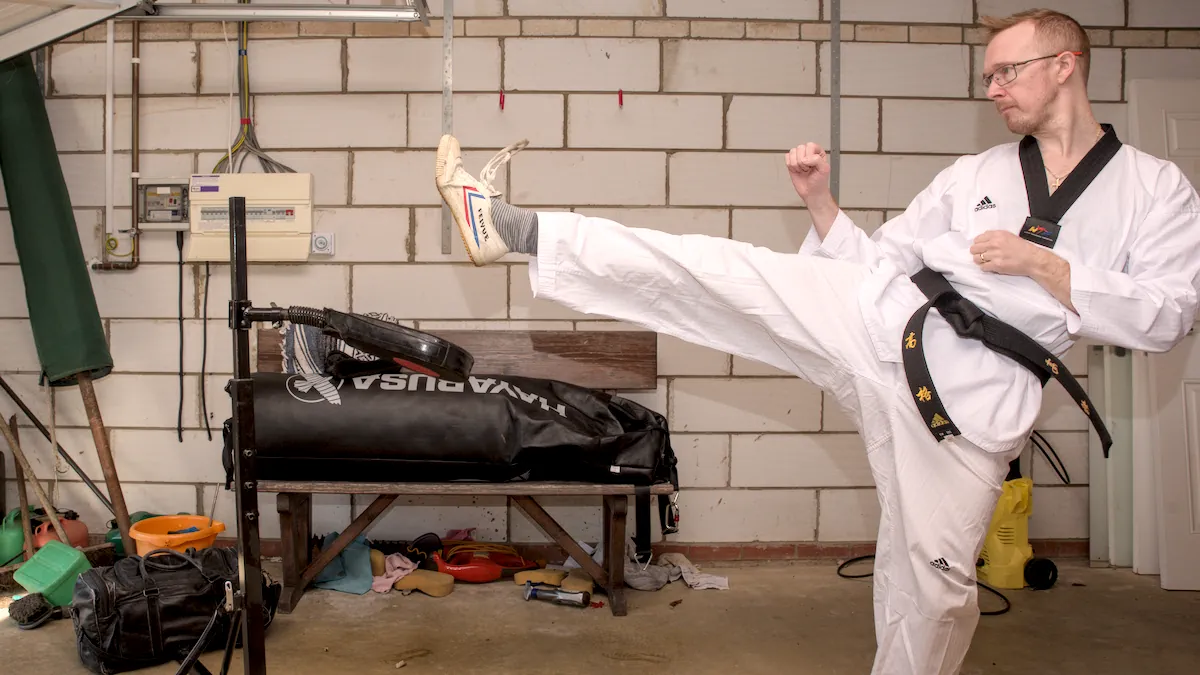It might surprise you to find out that more than half of an MMA fighter’s training can be done alone. This may sound plain wrong for the average practitioner who goes to classes twice a week. Their MMA training consists mostly of learning techniques followed by some short sparring sessions.
There’s a whole lot more to MMA training than practicing techniques, though.
This is never more true than when you’re preparing for a fight. Firas Zahabi, head coach of Tristar Gym and coach of UFC champions such as Georges St. Pierre, says, “When I go into the practice room, I want to create flow. I’m having fun.” He even confesses to doing strength and conditioning daily, even though he doesn’t enjoy it.
You won’t improve your technical skills much in the three months before your competition, but you can make huge strides forward in the other areas of your MMA game. Only if you’re training right, though. Here’s how professional MMA coaches are training their fighters.
Can You Do MMA Training at Home?
In short, yes and no. While there’s no reason you can’t learn a martial art at home, it has enormous limitations when it comes to MMA.
Yes, because almost all types of strength and conditioning for MMA can be done alone at the gym or at home if you have the equipment.
No, because for everything else, you need partners.
There are no forms or katas in MMA. Its training is all geared toward competing in the ring. So, classes are divided into learning techniques and sparring. For someone learning alone at home, there’s no way to do either.
However, if you’re training with a friend, you could learn techniques from a book or online course and spar together. But sparring with a friend won’t prepare you for fighting in the ring or cage.
Sparring with the same partner day in and day out is a recipe for developing bad habits. You know how he fights. You know his weaknesses. Any MMA gym will have you changing partners multiple times each session, and you quickly realize what works on one opponent won’t always work on the next.
UFC fighters have to bring in new sparring partners, not only to emulate their opponents but also as a way to get the variety they need to keep their skills fresh.
MMA Gyms vs. a Traditional Martial Arts Dojo
Walk into any kung fu “wu guan,” karate dojo, or taekwondo dojang, and you’ll see a similar sight. There are hardwood floors and a big empty space, maybe with some decoration on the walls.
But inside an MMA gym, it quickly becomes apparent what the place is set up for. Heavy bags hang from one side, speed bags and floor-to-ceiling bags from the other. There’s a section tucked away with a squat rack, bench press, and other workout gear. A class occurs atop a large matted area next to a ring or octagon. Everything about the MMA gym screams fight.
Bruce Lee, arguably the father of MMA, said it best, “Baby, you better train every part of your body.”
The training screams it, too.
How to Train MMA More Effectively
Here are five tips to incorporate into your MMA training and get a step closer to a UFC belt.
1. Fighters Train Twice a Day
Fighters call it two-a-days, and it’s the standard training routine for almost everyone; even Connor Mcgregor, who preferred training “Whenever I want,” eventually came around to two sessions per day.
MMA fighters don’t spend all that time sparring, though. The idea of two sessions a day gives them a chance to perfect their fighting skills and gain the strength and conditioning that the fight game demands. It’s all well and good being able to throw a perfect spinning heel kick, but if you’re exhausted before the end of the first round, it won’t matter.
Light technical sessions give fighters the skills they need without wearing them out. Then, a mid-day rest is all they need to lift weights or put some miles on the clock in the afternoon.
2. You Must Lift Weights
It’s still not uncommon to hear martial artists say you should avoid lifting weights because it will slow you down or make you muscle-bound.
Anyone who has tried to put on muscle will know that becoming “muscle-bound” is a full-time job. And the myth about it making you slow is just unfounded. Bruce Lee lifted weights, and phenomenal speed was the one thing everyone said about him.
Recent studies show this to be true. One study from 2022 shows that the greatest speed increases come from maximal weight training, which means using loads at about 85% of your one rep max.
This makes sense because speed is a function of strength; a bigger engine makes a car go faster.
Incorporating a well-structured weightlifting program into your MMA training will ensure you’re not falling behind everyone else who is.
3. Separate Out Your Training
Most gyms have an old heavy bag hanging in the corner somewhere, and occasionally, a gym bro will lace up the public gloves and throw some wild punches at it. However, if you asked him what he’s training, you might not get a clear answer.
There are a few things you can improve with a heavy bag:
- Technique
- Speed
- Power
- Cardio
But if you’re training for cardio, i.e., a long session to exhaust yourself, you can’t simultaneously work on your technique. A tired fighter who’s been hitting a bag for 10 minutes non-stop won’t have great technique. Their speed and power will flag, too.
So, if you’re training technique, concentrate on getting the technique right. Don’t load up on punches or try to break a speed record. Use short rounds and rest fully between rounds.
The same goes for hitting heavy when training for power. Powerlifters may rest five minutes or more between sets. Similarly, practicing those heavy punches when your arms are like jelly makes no sense.
It’s not just the heavy bag, either.
If you’re lifting weights, are you lifting to gain muscle? To gain stamina (such as punching with light weights for shoulder stamina) or training for explosiveness or raw strength? They all have a place in a mixed martial artists training camp, but not in the same lifting session.
- Use body-building protocols for gaining muscle – 20-30 sets per workout of 8-15 reps.
- Use 50% of your one rep max for training explosiveness with low-mid reps.
- For Strength gains, go heavy, five reps or less, and increase your rest between sets.
4. Stretch Even If You Don’t Kick
Stretching sucks. It’s uncomfortable, boring, and takes way too long.
Do it anyway.
Not all MMA fighters intend to throw head kicks, but they should still be flexible enough to. It’s not even only for fighters. The Mayo Clinic thinks everyone should be aiming for better flexibility. Here’s why.
- Flexibility is useful when you’re tangled up on the ground.
- You’re less likely to get injured.
- You’ll be able to keep training as you age.
- A greater range of motion means you can generate more power.
Both ground fighting and stand-up get better when you have more flexibility. Your punches will hit harder, your strength and conditioning training will be more effective thanks to increased blood flow, and you’ll be less likely to tap when on the ground.
And let’s not forget the possibility of a head-kick knockout.
5. Playful Sparring Keeps It Interesting
The real purpose of a heavy bag is to practice those power shots. So don’t do them in sparring.
Heavy sparring sessions mean long recovery periods, which is why you’ll hear many professional fighters, such as former UFC champion Max Holloway, say they only spar lightly, even leading up to a fight.
The key to effective sparring sessions is your partner. Different sparring partners make a world of difference. Everyone’s sparred with that guy with a chip on his shoulder and something to prove. He thinks you’re weak for going semi-contact, so he takes advantage to hit you hard, thinking you won’t hit him back.
Of course, you crack him back to make him back off, and the whole session turns into a round of trading full-contact blows instead of learning how to fight.
Instead, when you have a training partner you know and like, you can have some fun, knowing that everyone has left their egos off the mat and wants to work on their skills with a smile.
It’s light, playful sparring sessions that allow you to really focus on technique, timing and defense such as your fighting stance. If you want to practice knockout punches, go hit a heavy bag.
The real reason to spar lightly isn’t just to avoid injury, it’s because you can spar lightly everyday. You don’t need a week to recover, you don’t need to wait for bruises to heal. A daily 1-hour light sparring session will accumulate 365 hours at the end of the year. Someone going hard twice a week will only get 104.
The technical proficiency you’ll gain over those extra 251 hours are immeasurable.






